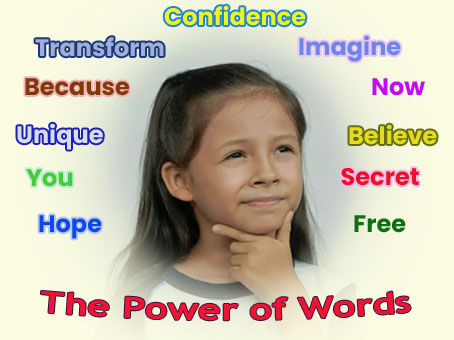Friending Your Brain
- Pathways of Possibility

- Jun 26
- 5 min read

Here Natasha Thomsen explores the relationship between the brain and developing a spiritual life—and how we can learn to understand, communicate and partner with our brains as we aspire towards our higher human purpose.
What does the brain have to do with a spiritual journey?

A human depends on the brain to navigate and translate multiple signals. Many human processes are automated by repetition into one’s physical and energy systems that are hardly noticed once learned (like talking, walking, or driving). But with the subjective parts of the brain, profound and strange feelings from moments recorded and coded by the brain can resonate across a lifetime. Say, a conversation with someone or seen in a glimpse of a child’s eyes—the more these moments are recalled, the stronger they become, sometimes building new meaning later in life. In stark contrast with the systems you were born and raised with, these perception growth spurts can enhance as well as challenge.

The physical body is controlled from conception until death by the brain, which triggers each stage of life. The brain is also like a motor supporting the mind. Between the overlapping awareness of past and present, a person can choose to direct their energy to stay with what was or create new pathways and change outcomes. These choices have the power to reshape the brain, one’s life, and influence others. These choices also have the power to help or hinder a person who has chosen to undertake a spiritual journey, which depends upon the ability of the mind to be open to new perceptions, revelations and opportunities.
Voice and the Gift of Inner Speak
How does it begin? Like a baby perceiving the world, the brain has an amazing ability to reshape, rewire, hold mental pictures, and explore ideas. It adapts each moment to dominant sounds and smells tied to cause and consequence. Some to food, others to people and environments. Learning that a unique but repeated sound is a name is an identifying experience. Simple relationships develop from these electrical impulses into a growing network of meaning and emotions—some temporary, others for life.
The two halves of the brain alternate in growing response to these individual experiences, reshaping aptitudes, attitudes, psychological patterns, and personal inclinations and philosophy. The left brain’s controls of language, reactions, and habits can be tempered by the right brain’s ability to detect nuance in sounds, smells, and feelings; imagine stories; create dances; and project visually. External experiences continuously reshape how one balances these dynamic changes—by resistance or promotion—while an internal world of self-awareness (aka consciousness and sensitivity) is also expanding. By befriending your brain, you are building a bridge between the natural soul at birth and your unique reshaping of it. But what is this bridge made of? What kinds of experiences can it process?
Enter self-talk. “This is my brain. It knows what it needs from me as its closest ally.” Show it how to learn, listen, and experiment by engaging in conversations with it through your mind. Introduce tasks that create curiosity and other qualities. Observe it like watching a two-year-old child. Challenge it with new relationships, passions, and perceptions. Moderate its temper by not giving energy to annoying occurrences. This is when the brain needs to hear, “I am thinking about your future.” Experiment with self-talk such as, “You are coming with me for this ride. Stay close. Save your energy.”

(Think of yourself like an athlete developing inner speak to reach a hyper-focused state, “in the zone,” undistracted by coaches, fans, scores, or judges, adjusting to a newly discovered inner speed and rhythm.)
Shepherding the brain and body’s physical needs is a step in the direction of channeling precious fuel to the mind. Ask: Is it getting enough sleep? Does it have enough oxygen to function? How is it affected by different speeds? What sounds or octaves distress it? Ask what it wants and then bargain with it: “Let’s use this time to explore and we’ll watch a movie later.” Vary the time you spend on activities. Which ones enhance you? Challenge you? Create unending curiosity? Bore you? Deplete your energy? Have you tried them again at different ages of your life for evolving needs?

As one ages, the brain needs to regularly recalibrate with the soul’s energy systems. Perhaps deliberately creating more quiet time for reflection or visualization. Keep it tuned to you and your refreshed values like an instrument that needs tuning by a musician. Ask yourself often what you need, why you are here, what you want, why you do what you do. You may need to initiate new reasons or discontinue life-long living patterns to keep pace with changing circumstances, especially during a crisis or traumatic event.
Humans, unlike animals with limited ranges, have a unique and vast range of unexplored consciousness to exercise with and discover. Each life with its new brain has the potential to engage more of its systems.
Self-fortification Leading to Inner and Outer Harmony
The brain needs to know why it should do what you want, go where you want to go. As you learn, it learns. Minding one’s well-being is less a choice and more a necessity as one ages for the brain to remain in harmony with the evolving you. It can become overheated, and the body chemically weakened from processing stress or anxiety responses, inflammation, yeast, emotions, and multitasking. Too much pressure or intensity can tax its physical, emotional, and mental limits, so practice self-pacing, get to know yourself. Experiment with choices to see what they bring: peace or conflict, deep or shallow feelings, strong or weak outcomes? Being on a spiritual journey means you can also ask for assistance from the unseen realms. Do you know how?

Training oneself from an early age to have a soft and flexible self-view allows for long-range opportunities. Self-identifying as an expert or with stories from one’s past potentially can fix a person to ambitions or short-lived hopes. Changing habits, dependencies, and roles can free energy from disappointments and fears, and build resilience, creative problem-solving, and thinking into new territories. Collect experiences beyond what you have enjoyed so far: learn languages of all varieties, from singing, movement, and skills, to travel trips. Make food shopping an adventure for the body to discover what new things it likes. A walk in the garden can become an inspiring discovery of different textures, colors, or lights. Find out what fuels your body, mind, and energy systems—both to enhance life moment by moment and enable it to be less derailed from the inevitable highs, lows, pains, disappointments, satisfactions, and the unexpected.

When your mind is able to advise you, then you can be fortified by the pathways you’ve created, lighted by the spiritual intentions of your life and its higher human purpose.
Friend your brain to stay alive, receptive, and find out why you were both born into a conscious life form with such sophisticated equipment. In this two-way sharing of intelligence between you and it, building trust keeps one both stable yet stimulated while meeting new parts of each other and improving capacity to be open to the awarenesses and developments that are part of a spiritual journey.
Like a footpath between you-now and you-future, energy forms new brain circuitries between what created you and what you create as a spiritually inclined life.
Discover what relieves stress and aggravation in you. Make space for what enhances and holds beauty for you. Music? Art? Watching birds? Prioritize what makes you feel pleased or strong but also fills you with a sense of purpose, yours and within a greater one. Imagine yourself as a tiny bubble inside a big one. The universe, perhaps?

What did you think?
Please send us your comments via our contact form.
We’d like to thank our team of volunteers for generously donating all content you see on Pathways of Possibility to keep it a place of inspiration. If you’d like to support our 501(c)(3) nonprofit, you can help us with a donation that’s affordable to you. Thank you!










